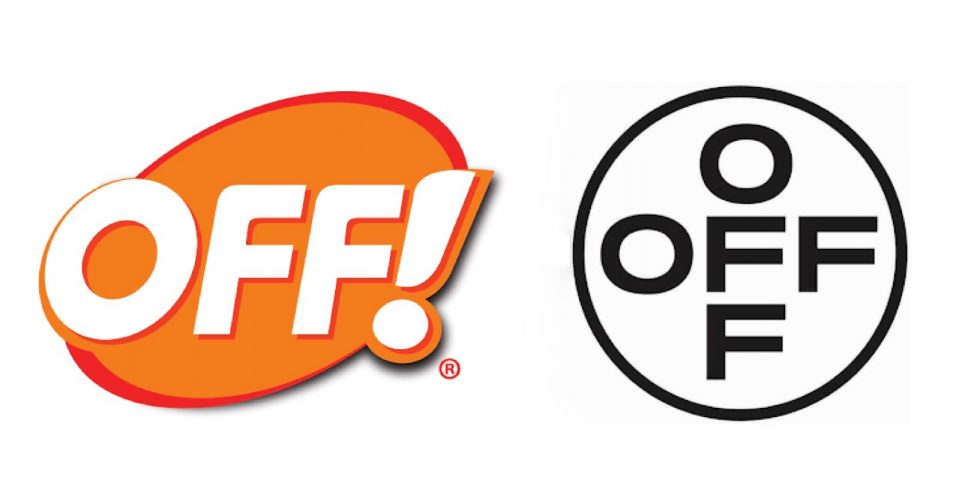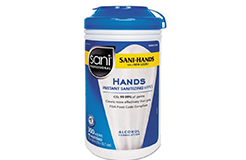Did not receive verification mail? Please confirm whether the mailbox is correct or not Re send mail

Vapor
- 2020-10-14 10:32:29
Off-White is Clashing With S.C. Johnson Over Their Respective “OFF” Branding

Off-White is in the midst of its latest branding venture. As
indicated by some relatively recently-unveiled signage (both online and
on the façade of some of its brick-and-mortar outposts), the graphics
that appear on various garments and accessories, and some interesting
trademark applications, the Virgil Abloh-helmed brand is putting the
“Off” element of its name front and center. Hence, the necklaces that
consist of the letters “O F F” dangling from a chain, the t-shirts with
the word printed right below the collar seam, and the little logo that
serves as the brand’s Instagram icon.
In placing its emphasis on
“Off,” the uber-famous fashion brand and its ubiquitous founder have
not only engaged in their latest act of morphology; Off-White has, after
all, mastered the art of evolving, especially when it comes to
branding. They have set the foundation for a whole new slew of legal
squabbles, just as they have in the past, such as when they opted to
adopt the crosswalk-like graphic of diagonal lines as one of the brand’s
earliest indicators of source, and to seek trademark registrations for
it, thereby, resulting in trademark-centric fights with the likes of
Helly Hansen, Los Angeles-based denim brand Paige, and Dubai-based
health insurance administrator Neuron LLC, among others.
This
time, the trademark may be different but it appears as though the rise
of legal issues is the same, as Off-White has ruffled the feathers of an
entity even bigger and mightier than itself: S. C. Johnson & Son.
Get Off
In
the midst of filing more than 20 different trademark applications for
various stylizations of the word “Off” in the U.S., alone, at least some
of which have resulted in registrations (others are still in the
pre-registration process and some have been abandoned by the brand), one
application for registration, in particular, stood out to S. C.
Johnson: the word “OFF” written both horizontally and vertically inside
of a circle, for which Off-White is claiming rights in connection with
its intent to use on various types of bags, including “all purpose carry
bags,” and jewelry.
In the currently-pending opposition that it
initiated with the U.S. Patent and Trademark Office’s Trademark Trial
and Appeal Board (“TTAB”) in October 2019, the consumer cleaning supply
and chemical behemoth called foul. According to its notice of
opposition, counsel for S. C. Johnson argued that Off-White should be
blocked from registering the “OFF Cross Design mark” because it is a bit
too similar to the marks it already uses in connection with its 63-year
old Off! insect repellant brand.
Due to its “longstanding and
continuous use of its OFF! trademarks,” S. C. Johnson claims that “the
relevant consuming public recognizes the OFF! trademarks as identifying
[S.C. Johnson] as the source of the goods offered under the OFF!
trademarks” – not Off-White. This is particularly true, the Racine,
Wisconsin-headquartered company claims, due to the fact that it “has
expended considerable time, money, and effort advertising and promoting
its OFF! trademarks throughout the U.S.,” which has resulted in
“enormous recognition for and tremendous goodwill in the OFF!
trademarks.”
While the two companies do not exactly trade in the
same types of goods, S.C. Johnson’s Off! brand sells various repellant
products whereas Off-White primarily sells garments and accessories,
S.C. Johnson claims that consumers that see Off-White’s OFF Cross Design
mark will, nonetheless, “believe that it is merely a stylization of S.
C. Johnson’s OFF! trademarks.” This is due in part tothe fact that “the
dominant elements [of the two parties’ trademarks] and the emphasis of
the marks are identical,” the company alleges. As a result, “The
commercial impression conveyed by [Off-White’s] OFF Cross Design mark
and S. C. Johnson’s OFF! trademarks is the same.”
More than
that, S. C. Johnson claims that its products and those of Off-White are
not only“likely to be marketed and sold to the same consumers and move
in the same channels of trade,” but … Off-White’s goods “are in the
likely zone of expansion for goods sold by S. C. Johnson under the OFF!
marks,” thereby, leading to further potential for confusion.

(Here,
S.C. Johnson is essentially seeking to broaden the protection that it
currently enjoys from its rights in OFF! as used on the goods/services
that it actually offers to ones that it argues are in the “natural
scope” of potential expansion. This theory “contemplates that consumers
understand a connection between various goods or services, and that a
business that offers some items in connection with a brand is likely to
be connected with the offering of similar goods or service under that
brand,” says Gordon Feinblatt LLC’s Ned Himmelrich.
The doctrine,
itself, is a interesting/relevant one particularly in light of the
ever-expanding range of products/services offered up by consumer goods
companies, fashion brands, included. Hermès’ new-ish cosmetics
collection, Gucci’s home decor offerings, and Rosie Assoulin’s natural
wine label are a few examples of this, as are the products that fall
under the umbrella of Abloh’s almost-endless line up of collaborations –
from tie-ups with Evian and Ikea to Mercedes and Moet. The core issue
in such an argument is, of course, the extent of what additional
goods/services fall within the natural zone of expansion.)
Still
yet, because “a significant percentage of the relevant consuming public
recognizes OFF! as an indicator of source, as shown by the volume of
sales of the goods sold under the mark, [S.C. Johnson’s] use of the mark
in commerce since the 1950s, and the advertising resources used to
promote it,” those same consumers are likely to be confused as to
whether there is a connection between products bearing its mark and
those bearing Off-White’s Cross Design mark.
As such, S. C.
Johnson claims that the registration of Off-White’s mark would “impair
[its] exclusive right to use the OFF! marks in connection with the goods
identified in [its] registrations” – namely repellant sprays and
candles – and any others that are being “offered for sale by S. C.
Johnson in the U.S.” Such a registration would also “diminish the
tremendous goodwill accrued by S. C. Johnson in the OFF! marks,” the
company argues.
Faced with S. C. Johnson’s opposition, Off-White
filed its response in March, denying an array of the allegations made
by the privately-held consumer goods conglomerate, and asserting a
handful of defenses. Among other things, counsel for Off-White argues
that its use of the Cross Design mark “is not likely to cause confusion”
with S.C. Johnson’s marks, and that its goods are not “the same as or
similar to [S.C. Johnson’s] goods/services and thus, are not likely to
cause confusion with [S.C. Johnson’s] goods/services.”
An Even More Aggressive Attempt?
While
that matter makes its way towards a trial before the TTAB, Off-White
has prevailed – by default – in an arguably-even-more-aggressive
opposition proceeding of its own.
In April, counsel for the
buzzy brand sought to shoot down a pending trademark application filed
by dental and medical healthcare product company Robell Research, Inc.
for the word “Off” for use on “non-medicated dental preparations.” On
the heels of Robell filing a trademark application for registration for
“Off,” counsel for Off-White filed an opposition arguing that the brand
would be damaged if Robell was granted a registration for “Off” for use
on … toothpaste.
To be exact, Off-White claimed that its rights
in the famous “Off-White” brand name (and relevant trademarks) would be
diluted if Robell was granted exclusive rights in the mark for
“non-medicated dental preparations for personal use, namely, gels and
pastes for protection against staining; Tooth gel; Tooth whitening
preparations; Toothpaste.” That proceeding officially resolved itself in
Off-White’s favor in May when the TTAB issued a notice of default after
Robell failed to respond to the opposition, and ultimately abandoned
its application for the “Off” mark.
Source: www.thefashionlaw.com
Editor:Vapor
- I also said the two sentence
- Also you can enter 140words






